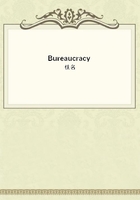
第27章 THREE-QUARTER LENGTH PORTRAITS OF CERTAIN GOVERNME
If it were possible for literature to use the microscope of the Leuwenhoeks, the Malpighis, and the Raspails (an attempt once made by Hoffman, of Berlin), and if we could magnify and then picture the teredos navalis, in other words, those ship-worms which brought Holland within an inch of collapsing by honey-combing her dykes, we might have been able to give a more distinct idea of Messieurs Gigonnet, Baudoyer, Saillard, Gaudron, Falleix, Transon, Godard and company, borers and burrowers, who proved their undermining power in the thirtieth year of this century.
But now it is time to show another set of teredos, who burrowed and swarmed in the government offices where the principal scenes of our present study took place.
In Paris nearly all these government bureaus resemble each other. Into whatever ministry you penetrate to ask some slight favor, or to get redress for a trifling wrong, you will find the same dark corridors, ill-lighted stairways, doors with oval panes of glass like eyes, as at the theatre. In the first room as you enter you will find the office servant; in the second, the under-clerks; the private office of the second head-clerk is to the right or left, and further on is that of the head of the bureau. As to the important personage called, under the Empire, head of division, then, under the Restoration, director, and now by the former name, head or chief of division, he lives either above or below the offices of his three or four different bureaus.
Speaking in the administrative sense, a bureau consists of a man-servant, several supernumeraries (who do the work gratis for a certain number of years), various copying clerks, writers of bills and deeds, order clerks, principal clerks, second or under head-clerk, and head-clerk, otherwise called head or chief of the bureau. These denominational titles vary under some administrations; for instance, the order-clerks are sometimes called auditors, or again, book-keepers.
Paved like the corridor, and hung with a shabby paper, the first room, where the servant is stationed, is furnished with a stove, a large black table with inkstand, pens, and paper, and benches, but no mats on which to wipe the public feet. The clerk's office beyond is a large room, tolerably well lighted, but seldom floored with wood. Wooden floors and fireplaces are commonly kept sacred to heads of bureaus and divisions; and so are closets, wardrobes, mahogany tables, sofas and armchairs covered with red or green morocco, silk curtains, and other articles of administrative luxury. The clerk's office contents itself with a stove, the pipe of which goes into the chimney, if there be a chimney. The wall paper is plain and all of one color, usually green or brown. The tables are of black wood. The private characteristics of the several clerks often crop out in their method of settling themselves at their desks,--the chilly one has a wooden footstool under his feet; the man with a bilious temperament has a metal mat;the lymphatic being who dreads draughts constructs a fortification of boxes on a screen. The door of the under-head-clerk's office always stands open so that he may keep an eye to some extent on his subordinates.
Perhaps an exact description of Monsieur de la Billardiere's division will suffice to give foreigners and provincials an idea of the internal manners and customs of a government office; the chief features of which are probably much the same in the civil service of all European governments.
In the first place, picture to yourself the man who is thus described in the Yearly Register:--"Chief of Division.--Monsieur la baron Flamet de la Billardiere (Athanase-Jean-Francois-Michel) formerly provost-marshal of the department of the Correze, gentleman in ordinary of the bed-chamber, president of the college of the department of the Dordogne, officer of the Legion of honor, knight of Saint Louis and of the foreign orders of Christ, Isabella, Saint Wladimir, etc., member of the Academy of Gers, and other learned bodies, vice-president of the Society of Belles-lettres, member of the Association of Saint-Joseph and of the Society of Prisons, one of the mayors of Paris, etc."The person who requires so much typographic space was at this time occupying an area five feet six in length by thirty-six inches in width in a bed, his head adorned with a cotton night-cap tied on by flame-colored ribbons; attended by Despleins, the King's surgeon, and young doctor Bianchon, flanked by two old female relatives, surrounded by phials of all kinds, bandages, appliances, and various mortuary instruments, and watched over by the curate of Saint-Roch, who was advising him to think of his salvation.
La Billardiere's division occupied the upper floor of a magnificent mansion, in which the vast official ocean of a ministry was contained.
A wide landing separated its two bureaus, the doors of which were duly labelled. The private offices and antechambers of the heads of the two bureaus, Monsieur Rabourdin and Monsieur Baudoyer, were below on the second floor, and beyond that of Monsieur Rabourdin were the antechamber, salon, and two offices of Monsieur de la Billardiere.
On the first floor, divided in two by an entresol, were the living rooms and office of Monsieur Ernest de la Briere, an occult and powerful personage who must be described in a few words, for he well deserves the parenthesis. This young man held, during the whole time that this particular administration lasted, the position of private secretary to the minister. His apartment was connected by a secret door with the private office of his Excellency. A private secretary is to the minister himself what des Lupeaulx was to the ministry at large. The same difference existed between young La Briere and des Lupeaulx that there is between an aide-de-camp and a chief of staff.